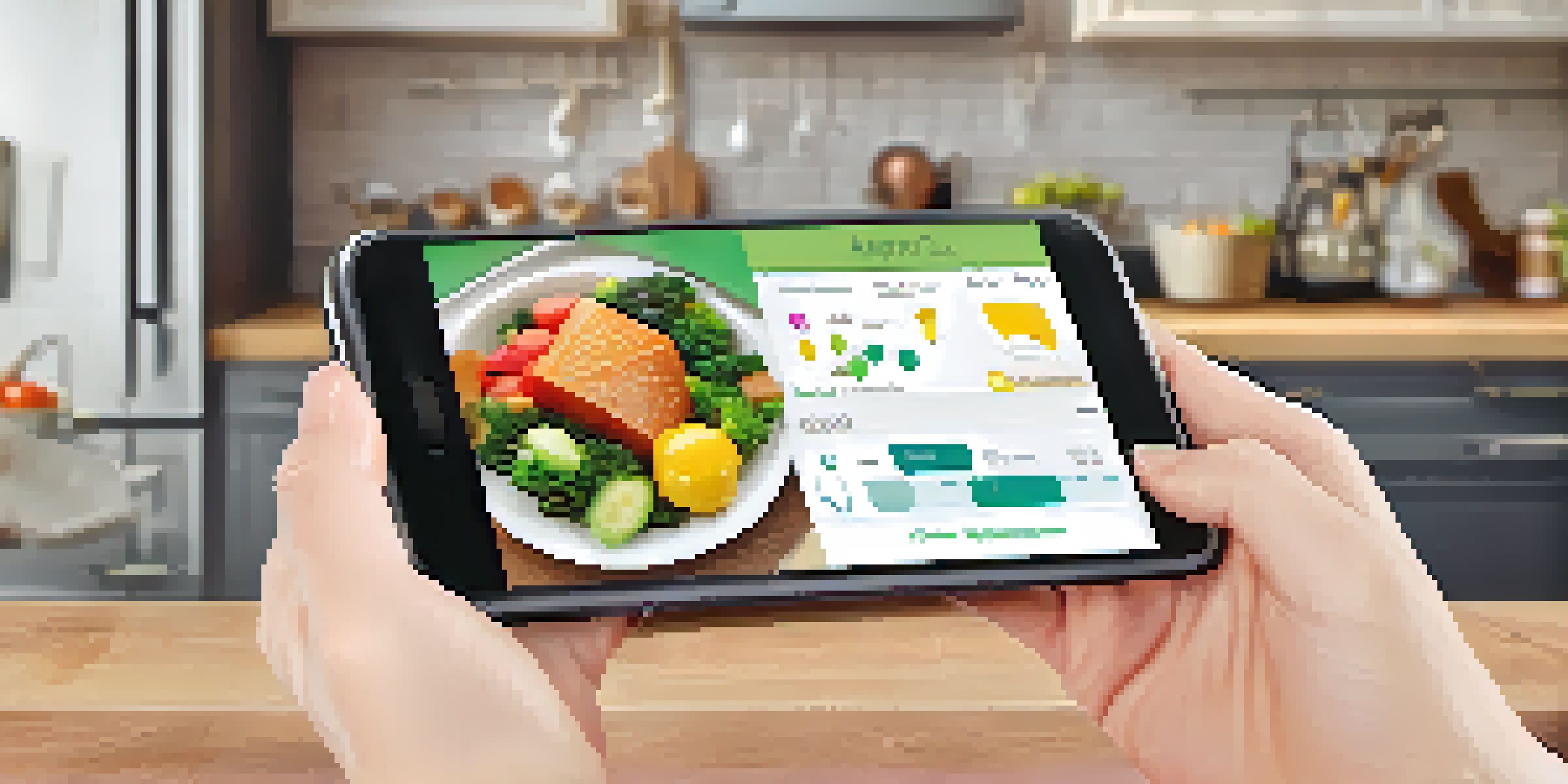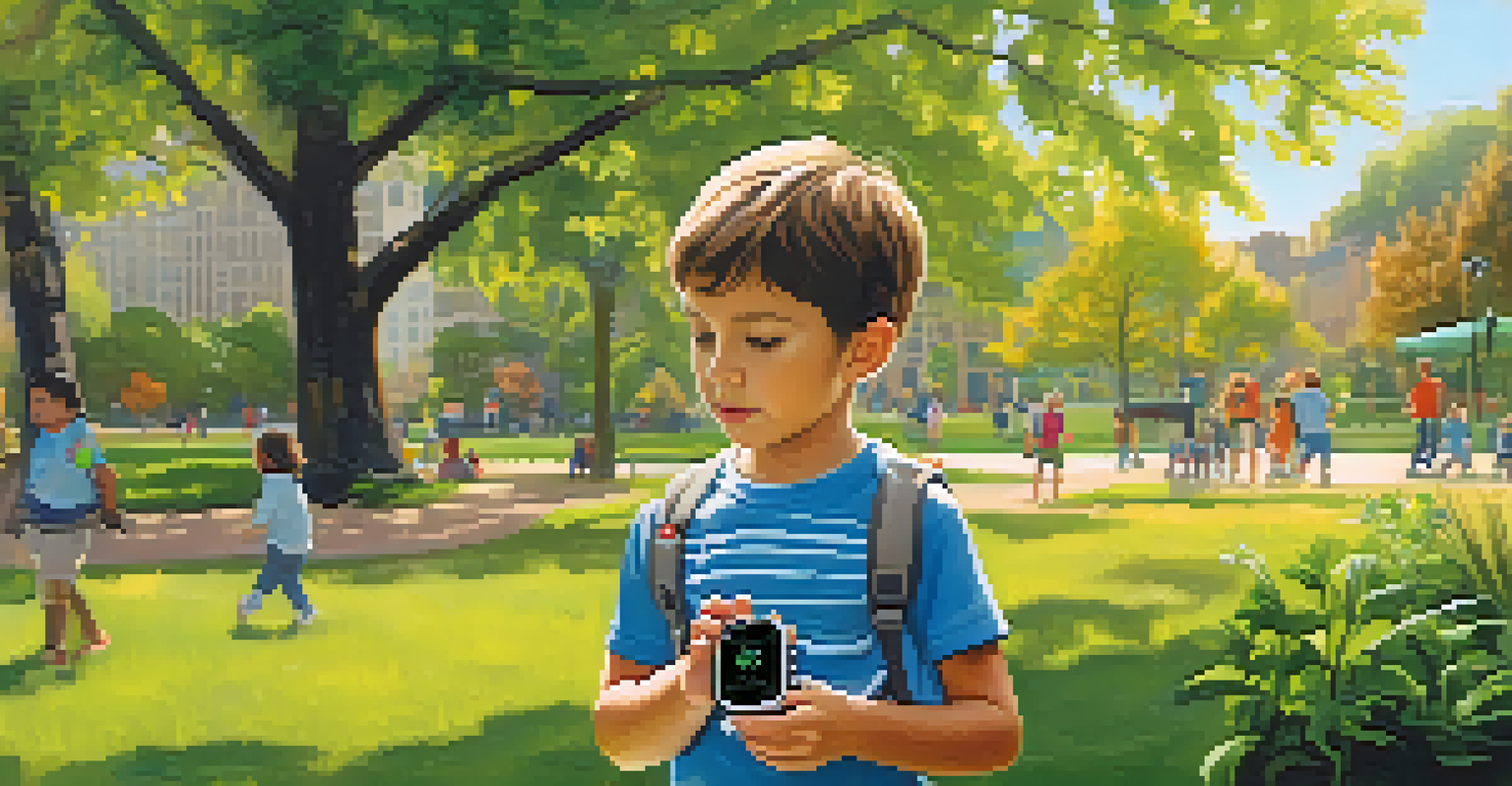The Role of Technology in Managing Food Allergies: Innovations

Understanding Food Allergies and Their Impact
Food allergies affect millions of people worldwide, causing reactions that can range from mild to life-threatening. These allergies occur when the immune system mistakenly identifies a harmless food protein as a threat, prompting a response that can lead to symptoms like hives, swelling, or even anaphylaxis. Given their severity, managing food allergies is crucial for those affected, impacting daily choices and lifestyle.
Food allergies are a serious public health issue that can lead to significant morbidity and mortality.
The emotional and physical toll of food allergies can be significant, not just for individuals but for families and caregivers as well. Parents, for instance, must be vigilant about what their children eat, constantly reading labels and asking questions while dining out. This heightened awareness can create stress but also fosters a community of support among those facing similar challenges.
Fortunately, advancements in technology are changing the landscape of food allergy management, providing individuals with tools and resources that enhance safety and confidence. From mobile apps to wearable devices, technology is proving to be a game-changer in navigating the complexities of food allergies.
Mobile Apps Enhancing Allergy Management
Mobile apps have emerged as invaluable tools for individuals managing food allergies. These applications can help users track their allergies, scan barcodes for ingredient information, and even find restaurants that cater to their dietary needs. By centralizing important information, these apps empower users to make informed decisions quickly.

Some apps offer features like allergen alerts and community forums, creating a network of support and shared experiences. For example, users can share safe recipes or warn others about potential allergen exposure in specific products. This sense of community can be incredibly comforting for those navigating the challenges of food allergies.
Tech Tools Empower Allergy Management
Mobile apps, wearable devices, and innovative food labeling technologies are revolutionizing how individuals manage their food allergies, enhancing safety and confidence.
Additionally, many apps are designed with user-friendly interfaces, allowing people of all ages to utilize them easily. The convenience of having allergy information at your fingertips not only enhances safety but also promotes a greater sense of independence for individuals managing their food allergies.
Wearable Devices for Real-Time Monitoring
Wearable technology is revolutionizing how individuals monitor their food allergies. Devices like smartwatches and fitness trackers can now be equipped with features to alert users of potential allergen exposure. For instance, some wearables can detect changes in heart rate or skin temperature, which may indicate an allergic reaction is beginning.
The best way to manage food allergies is to avoid the allergens altogether, but technology can help us navigate that challenge.
These devices often sync with mobile apps, creating a comprehensive health monitoring system. When an anomaly is detected, users receive immediate notifications, allowing for quick action, such as administering an epinephrine auto-injector. The ability to monitor health in real-time adds an extra layer of security for those with food allergies.
Moreover, the integration of technology in wearables promotes proactive health management. By continually collecting data, users can better understand their bodies and recognize patterns or triggers, leading to more informed discussions with healthcare providers.
Innovative Food Labeling Technologies
Understanding food labels is crucial for individuals with food allergies, and innovative technologies are making this easier than ever. Companies are now employing QR codes and augmented reality (AR) to provide detailed information about food products. Scanning a QR code can reveal allergen information, ingredient sourcing, and even potential cross-contamination risks.
This technology not only enhances transparency but also allows consumers to make informed decisions about the food they purchase. AR can take it a step further by displaying 3D models of allergens, helping users visualize what they should avoid. Such innovations bridge the gap between food manufacturers and consumers, fostering trust.
Community Support is Essential
Online platforms provide vital support networks for individuals with food allergies, fostering connections and sharing resources to navigate their challenges.
Ultimately, these labeling advancements empower individuals with food allergies to navigate grocery stores confidently. With easy access to information, consumers can avoid allergic reactions and enjoy a wider variety of food options, enhancing their overall quality of life.
Telehealth Solutions for Allergy Management
Telehealth has transformed how patients interact with healthcare providers, and it has significant implications for food allergy management. Virtual consultations allow individuals to discuss their allergies and treatment plans without needing to travel, which can be especially beneficial for those with severe allergies. This convenience can lead to more frequent check-ins and better long-term management.
Moreover, telehealth can help patients access specialists who may not be available locally. For instance, someone living in a rural area can connect with an allergist in a major city, gaining insights and advice that might not otherwise be accessible. This expanded access to expertise can empower patients to take control of their allergy management.
As telehealth continues to evolve, it may also integrate with other technologies, such as wearables and apps, creating a holistic approach to health management. The synergy between these platforms can provide comprehensive support tailored to individual needs.
Artificial Intelligence in Allergy Detection
Artificial intelligence (AI) is making waves in the food allergy space, particularly in detecting allergens in food products. AI-driven systems can analyze ingredient lists and identify potential allergens more efficiently than traditional methods. This technology not only speeds up the process but also reduces the chances of human error, which can be critical for those with severe allergies.
Some companies are even developing AI tools that can help predict allergic reactions based on personal health data and previous reactions. By analyzing patterns, these systems can provide insights that guide individuals in making safer food choices. This predictive capability can be a game-changer, allowing users to avoid situations that could lead to an allergic reaction.
Telehealth Expands Access to Care
Telehealth solutions enable individuals to consult with specialists remotely, improving access to allergy management and personalized care.
Furthermore, as AI continues to improve, we can expect more sophisticated tools that enhance food safety and allergen management. The potential for AI to revolutionize how we approach food allergies is immense, paving the way for tailored solutions that cater to individual needs.
Community Building Through Online Platforms
Online platforms are playing a crucial role in building communities for individuals managing food allergies. Social media groups and forums provide spaces for sharing experiences, recipes, and coping strategies. These communities foster a sense of belonging, making it easier for individuals to navigate their challenges with support from others who understand their situation.
In addition to emotional support, these platforms often serve as valuable resources for information on new products, research findings, and advocacy efforts. Members can share insights on brands that prioritize allergen safety or alert others to recalls, creating a proactive network. This collective knowledge can significantly enhance individual safety and awareness.

As these online communities grow, they also empower individuals to advocate for better food labeling and allergen management practices. By coming together, they can amplify their voices and push for changes at local and national levels, making a broader impact on food allergy awareness and safety.